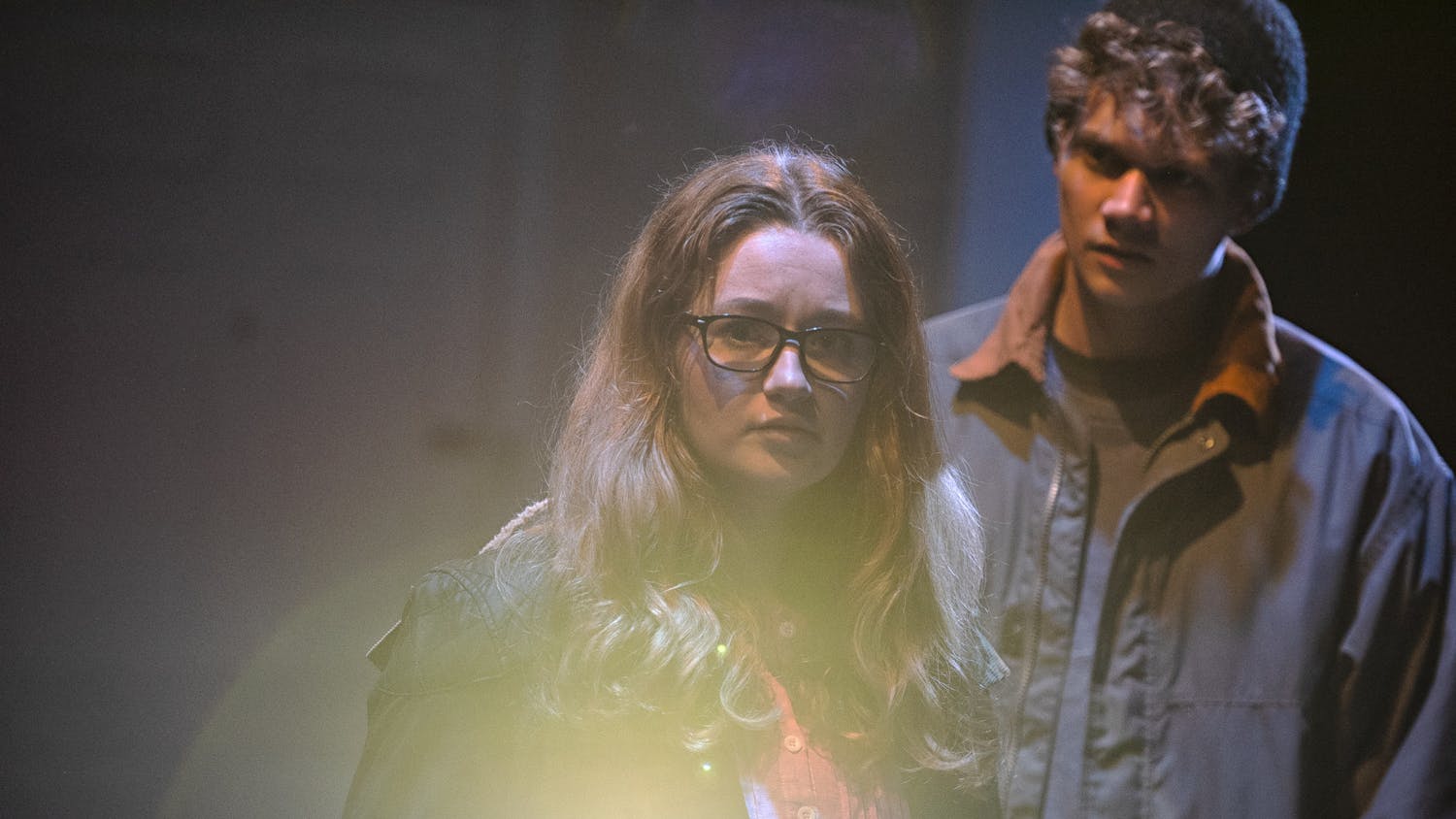Directed by Guillermo del Toro, “The Shape of Water” (2017) tells the story of Elisa (Sally Hawkins), a mute woman who works as a custodian in a government laboratory. She spends her days there with her coworker and friend Zelda (Octavia Spencer), and when she’s not at work she spends most of her time with her neighbor Giles (Richard Jenkins), an older man who paints in an apartment populated mostly by canvases and cats.
Del Toro introduces us to Elisa’s world with a montage that reveals the monotony of her days, from waking up, to punching in, to going to bed. Yet this all changes when Colonel Richard Strickland (Michael Shannon) shows up in the laboratory with a creature (Doug Jones), half man and half amphibian, captured in the Amazon.
On its own, this would no doubt make quite a compelling set up for a film, but del Toro has more in mind as Elisa is mute, Giles is gay and Zelda is a black woman. All three are marginalized in the world in which they live.
This aligns them in turn with the amphibian man, who has been brought in to be studied and experimented on by Dr. Robert Hoffstetler (Michael Stuhlbarg) and his team of scientists under Strickland’s supervision. Elisa is enamored by this amphibious creature, and as they both begin to fall for each other, Elisa and her friends decide that they must break this fish-man out of his prison.
Standing in their way is Strickland, a candy-chewing egomaniac who wants nothing more than to pick the creature apart piece by piece. He is the personification of all that is intolerant and violent, belittling Elisa for her disability and Zelda for her race. In a movie where one would expect the amphibious creature to be the monster, it is Strickland that emerges as the antagonist. Elisa and her friends must overcome his vision of a world where anything that is different must be destroyed.
Del Toro has long been known as a master stylist, bending the rules of nature to suit his vision. Whether through the creatures he brought to life in “Pan’s Labyrinth” (2006) and “Hellboy” (2004), or the breathtaking and disturbing architecture of “Crimson Peak” (2015), there is a look to all of his movies that distinguishes them. In the context of “The Shape of Water” it is hard to place exactly when you are until the Cold War aspects are integrated. It is obviously a period piece, sprinkled with 1950s-style cars and store fronts, but it works to the film’s advantage that there is nothing in its visuals to completely nail down this fairy tale’s time period.
Throughout the film, each setting has unique trademarks. Elisa’s apartment has impossibly curved windows, faux-victorian furniture and limited light, giving it a warm but lonely feel. Comparatively, the lab where she works is enormous, constructed from industrial steel, concrete and nondescript tiling that give it a dull and inhuman spirit. The only spot in the building with character is the room with the pool where our amphibian friend is housed. It is dark, but similar to Elisa’s apartment, the light playing off the water creates a sense of life despite the horrors that occurs within. It seems this is no mistake. This connection between places visually foreshadows the connection that will develop between the fish-man and Elisa. This is an emotiveness of setting that plays out throughout the entirety of the film and reveals del Toro’s remarkable attention to the detail of his world.
Completing this otherworldly experience is a cast committed to bringing each facet of this story to life. It is an ensemble of remarkable performances of which I could sing the praises for days, but for the constraints of a singular review I will focus on a pair of performances. First, as Elisa, Hawkins is positively captivating. Her performance recalls the greatest silent film stars, relying on facial expression and emotive motions to convey a depth of character as great as any spoken role. From the first moment when she is alarmed by the sight of this new creature, to when she brings him hard-boiled eggs and finally to when she stands in his embrace, the curves and motions of her face demonstrate the act of falling in love just as effectively as if she told us. I am brought back again and again to Elisa’s eyes, and one shot in particular when she makes eye contact with Giles over the shoulder of the fish-man: we only see half of her face, but the love radiating from her eye is palpable.
Standing there with her is Jones in full amphibian regalia. This is no new experience for him, as he donned a similar getup in “Hellboy” to play Abe Sapien, but del Toro and the make-up team have provided a costume unlike anything I’ve seen in modern film. The sapphire and turquoise hues of his skin give him an unmistakable presence, but it is the creature’s soul that Jones conveys so hauntingly. It is, while not silent, also a performance without a single spoken word. We see his terror upon his arrival at the lab slowly soften in response to Elisa’s affections. Together, Jones and Hawkins illustrate the most unconventional of love stories with a pair of unprecedented performances, all in the pursuit of the most human and natural of all acts, falling in love. I never found myself questioning the validity of the feelings they had for each other, or pulled out of the story because of whatever inter-species connection was happening. It is a poignant and romantic love story, and Jones and Hawkins deliver career-best performances in its service.
At its core, “The Shape of Water” is a love letter to all of its misunderstood and rejected characters, whether human or otherwise, who have been disregarded because of some perceived imperfection. The creature from the Amazon is not the monster. He is, by del Toro’s and the actors’ brilliant work, the romantic interest. The heroine cannot utter a single word, but tells us more about how to love and live beyond your limits than nearly any character I can recollect. Her confidants live in a world where central aspects of their identities are looked down upon, be that their skin color or sexual orientation, but they look beyond what the world thinks of them to do something incredibly moving. The film rarely delves into direct confrontation with the social issues it suggests, the exceptions being a pair of scenes in a diner where Giles develops a crush on the waiter, only to find out that he is both a racist and a homophobe, and a spattering of “your kind” comments made to Zelda throughout the narrative. What this seems to achieve is a permeated sense that the movie is not interested in focusing on what differentiates these heroes, but rather the common sense of moral integrity and empathy which they all feel. Del Toro has crafted a deeply moving film that reminds audiences that it is the humanity in each of us that binds us together, and that it should be stronger than anything we perceive as pushing us apart.
Reel Critic: “The Shape of Water”

Comments



